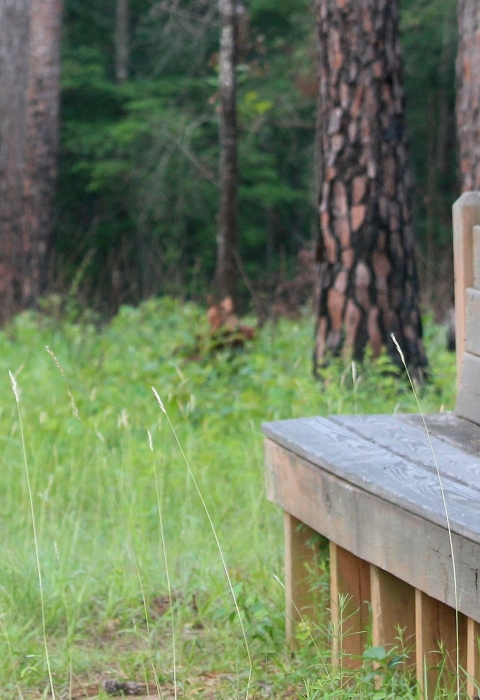Visit Us
Piedmont NWR is located in central Georgia in Jones and Jasper Counties, approximately 25 miles north of Macon and 18 miles east of Forsyth. The refuge may be visited by exiting I-75 at Exit 186 in Forsyth and driving east along Juliette Road for 18 miles. Upon entering the refuge, follow signs to the Visitor Center & Allison Lake for 5 more miles. An alternate route is State Highway 11, between Gray and Monticello. Just north of Round Oak on Hwy 11, turn west on Round Oak-Juliette Road and proceed for 3 miles to Allison Lake Road. The Refuge Office and Visitor Center are located on Allison Lake Road.
Location and Contact Information
About Us
Piedmont NWR was established in 1939 as a "combination wildlife and game-management demonstration area" to demonstrate that wildlife could be restored on worn out, eroded lands. Today, through the efforts of the U.S. Fish & Wildlife Service, the 35,000 acre wildlife refuge is once again a forest. It hosts loblolly pines on the ridges with hardwoods found along creek bottoms and in scattered upland coves. Clear streams and beaver ponds provide ideal wetlands for migrating waterfowl. The refuge is also now home to a growing population the endangered Red-cockaded woodpecker. Piedmont National Wildlife Refuge serves as a model of forest management for wildlife.
What We Do
Piedmont NWR has a very active forest management program that includes prescribed burning, invasive species invasive species
An invasive species is any plant or animal that has spread or been introduced into a new area where they are, or could, cause harm to the environment, economy, or human, animal, or plant health. Their unwelcome presence can destroy ecosystems and cost millions of dollars.
Learn more about invasive species control, thinning, regeneration, and forest stand improvement as some of the techniques used to enhance and maintain wildlife habitat conditions.
